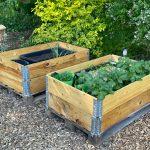 I like baking my own bread from time to time. Recently, I came across some useful information on baker’s yeast that I want to share here:
I like baking my own bread from time to time. Recently, I came across some useful information on baker’s yeast that I want to share here:
As you all know, there are two types of yeast being sold in supermarkets – fresh yeast and dry yeast. They’re to be handled a little different each since they come in different forms, but they’re both the same organism (“Saccharomyces cerevisiae” – which derives from its origin from brewing beer). They also both do the same thing: They give your dough fluffiness, airiness and volume by natural fermentation.
– Fresh Yeast comes in the form of little cubes, always weighing 42g
– Dry Yeast comes as a powdery substance in little packages, always weighing 7g
The information I want to share here is how to interchange the two types, and this is done by some kind of simple “rule of three”. With this formula you can easily convert the amount your recipe calls for into each other form of yeast:
Dry yeast x 3 (in g) = Fresh yeast (in g)
Fresh yeast (in g) / 3 = Dry yeast (in g)
Thus:
2 pkg. of dry yeast (=14g) x 3 = 1 cube of fresh yeast (=42g)
and vice versa.
While dry yeast is very unlikely to spoil as long as you use it within the date of expiry, you might want to test fresh yeast first before using it (which means essentially making sure it’s still alive and thriving):
Just crumble the amount of fresh yeast given in your particular recipe in 150ml of lukewarm water (not warmer!), add a pinch of sugar and dissolve it by stirring it lightly with a whisk. Let it sit for 5 minutes, meanwhile doing something else, and look for the bubbles. If it doesn’t bubble, it’s dead.
Sad thing. Just start over with new yeast.
